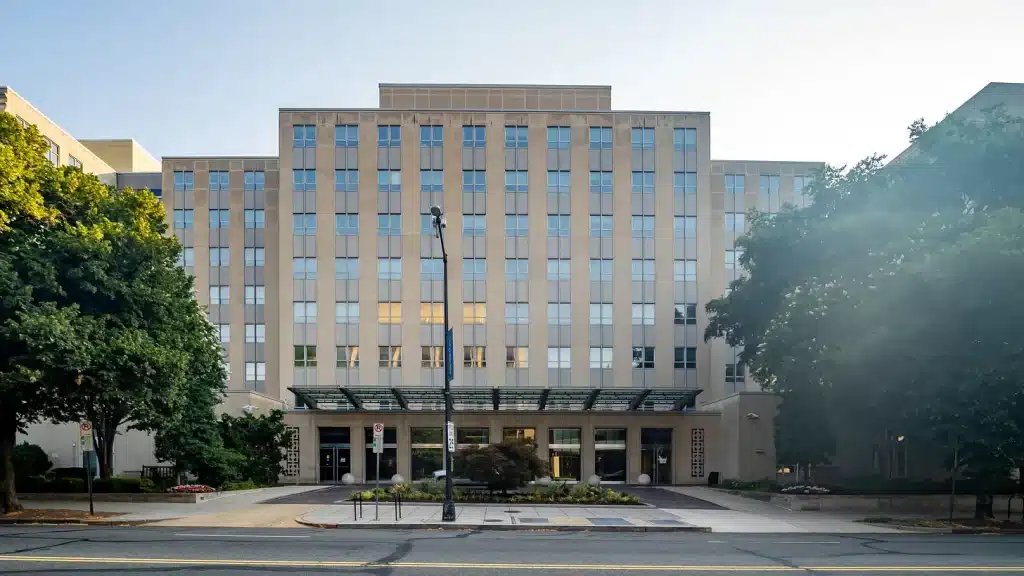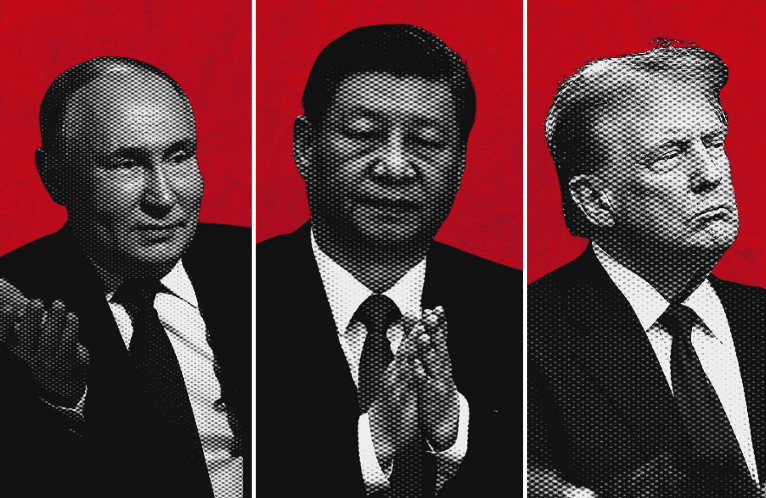America’s Uneasy History With Free Trade
We seem to be awash in opinions about free trade these days. From U.S. presidential campaign rhetoric to the recently signed 12-nation Trans-Pacific Partnership (TPP) agreement, it might feel like this debate has just started. But debate over trade is as old as the American republic, and it is intertwined with economic theories of competition and geopolitics.
The origins of free-trade agreements in the U.S.
From the early nineteenth century, trade was a divisive issue in American politics—and the fault-line fell fairly neatly between slave and non-slave states. Northern manufacturers sought the protection of high tariffs on competing imports; southern cotton producers backed open trade policies to promote their exports.
As decades passed, the general trend was toward higher tariffs to protect northern manufacturing; the trend culminated in the highly restrictive Smoot-Hawley Tariff Act of 1930.
Four years later, however, the tide started to reverse. At that time, President Franklin Roosevelt’s Secretary of State, Cordell Hull, was a dyed-in-the-wool free-trader (reflecting the interests of his state of Tennessee) and he was determined to reverse the high-tariff policies embodied in the the Smoot-Hawley act.
Hull could have simply asked congress to pass a new law bring tariff-rates down. Democrats were the free-trade party at the time—reflecting southern agricultural and consumer interests– and they controlled both houses. But Hull feared that if his party’s legislators simply reduced tariffs, future Congresses would raise them again. He needed a different way to lock in lower tariff policies.
His answer was to negotiate foreign trade agreements. The U.S. would reduce its tariffs, but only in exchange for partner nations reducing theirs. Congress authorized such negotiations in the landmark Reciprocal Trade Agreements Act of 1934. This new law provided, moreover, that once the lower rates were negotiated, they could be implemented through presidential proclamation. No further Congressional action was required. And the lower rates would be extended to all major US trading partners.
At the time, the United States was running a substantial trade surplus in manufactured goods. One of Hull’s masterstrokes was to recruit U.S. exporting industries into the process on the side of trade-barrier reduction, thereby providing a counterbalance to the protectionist, import-competing industries (such as textiles) that had previously dominated the country’s trade policy. U.S. trade barriers remained relatively high in the 1930s, but the trend was now in the downward direction.
Free trade’s evolution
The President’s negotiating authority was initially limited to bilateral agreements with individual foreign nations. But after World War II, amid a desire to integrate and rebuild the post-war economy, the U.S. led the creation of the multilateral General Agreement on Tariffs and Trade, known as the GATT. Under its auspices, the major world trading nations concluded a series of negotiating “rounds” to further lower trade barriers. The most prominent of these were the Kennedy Round (1963-67), the Tokyo Round (1973-79), and the Uruguay Round (1986-94).
As a result of these negotiations, U.S. tariff rates (on imports subject to tariffs) fell from the Smoot-Hawley average of 60% in 1930 to 5.7 percent by 1980 (and down further to 2.7 percent in 2013). Non-tariff barriers (such as quantitative limits on imports and restrictive regulations) were also reduced. Cumulatively, these trade agreements brought about a revolution in U.S. trade policy, opening both the American and foreign markets to an unprecedented degree.
This move to free trade wasn’t just about economics. Trade expansion was central to broader U.S. foreign policy during the Cold War. Together with military alliances, trade agreements helped bind together the major free-market democracies, their growing prosperity serving as an effective counter to the centrally planned economies of the Soviet Bloc and the People’s Republic of China.
Enter the free-trade agreement (FTA)
In the early 1980s, the form of U.S. trade agreements began to shift. Until then, successive U.S. postwar administrations pursued only comprehensive, global trade accords, and strongly criticized preferential deals limited to a few countries. Europe’s common market and economic union were mostly excepted from this critique, because of the broader geopolitical implications—above all, binding together the nations that had fought two calamitous wars in the first half of the twentienth century. But nonetheless, U.S. policy makers still denounced Britain’s preferential trade deals with former colonies, as well as France’s preferential treatment of certain trading partners.
U.S. efforts to launch a new global round foundered in 1982 in the face of European resistance. Meanwhile, Canada had reversed its longstanding efforts to insulate its economy from that of the U.S. and sought a bilateral free trade agreement with Washington. The two nations were each other’s largest trading partner, so the potential economic gains were substantial. Moreover, U.S. Trade Representative Bill Brock thought that launching a negotiation with Canada might soften European resistance to a new GATT round by showing that the U.S. had other options.
Congress authorized the negotiation in 1984, and the Canada-U.S. Free Trade Agreement was completed in 1988. When, to everyone’s surprise, Mexico then sought a similar accord, the result was the three-nation North American Free Trade Agreement (NAFTA). This proved the most controversial of all US trade accords, in part because average wages in Mexico were only a fraction of those in the United States, giving Mexican products an advantage on labor-intensive goods and thus threatening U.S. jobs. After a Herculean struggle, the Clinton Administration won Congressional approval in 1993.
Global trade negotiations remained a U.S. priority. The Uruguay Round agreement of 1994 reduced trade barriers further and created the World Trade Organization (WTO). But after this period the U.S. trade focus shifted to bilateral or regional accords. They were particularly popular during the George W. Bush administration. During its eight-year tenure, FTAs were concluded or ratified (in rough chronological order) with Jordan, Chile, Singapore, Morocco, Australia, Central America and the Dominican Republic (CAFTA-DR), Bahrain, Oman, Peru, Colombia, Panama, and South Korea. President Bush also pursued agreement in the WTO’s multilateral Doha Round, launched in 2001, but divisions between advanced and developing nations led to a stalemate.
Changes in political support for free trade
From the 1930s through the 1980s, the basic U.S. political fault line on trade was economic. Workers and businesses threatened by trade competition backed higher trade barriers; those who saw gains wanted to reduce them. Since the former, facing loss, were more politically active, U.S. negotiators had to seek out “trade winners” (exporters, international investors) and get them engaged politically. They also used broader arguments, citing economists’ estimates of the broad welfare benefits of trade, and pointing to international political gains. And they warned incessantly of the “slippery slope” of protectionism. Overall, free-trade advocates won out, though there were periods (like the 1980s) when major surges in imports generated a serious protectionist threat.
By the late twentieth century, however, the bulk of large U.S. industries had internationalized their production and had become dependent on foreign trade. So American business, heretofore divided, had become a strong overall supporter of trade-expanding agreements. But by the 90s, free trade faced a political backlash from a different quarter. Multinational business had become the target of an emerging anti-globalization coalition, joining organized labor and NGOs, particularly environmentalists, who saw trade as a force enriching the wealthy at the expense of the environment, the poor, and the U.S. middle class. This coalition first came together in a strong, if ultimately unsuccessful, campaign against Congressional approval of NAFTA. It eventually succeeded in blocking President Clinton’s 1997 effort to gain new authority to negotiate trade agreements.
“New Democrats” such as President Clinton (and later President Obama) still saw trade as a positive-sum game, noting its role, for example, in buttressing U.S. international economic leadership and pulling hundreds of millions out of poverty in China and elsewhere. But Democrats have been losing that political and intellectual argument within their party. The Uruguay Round Agreements Act of 1994 was the last time a president of either party did not depend on a heavy Republican majority to win approval of a controversial trade agreement.
Prospects for TPP
Into the dicey political climate of the early twenty-first century comes the Trans-Pacific Partnership, a U.S.-led agreement of 12 Asian and Western Hemisphere nations signed in February 2016 which aims to deepen economic interdependence (and mutual economic benefits) through a 30-chapter agreement. The agreement addresses labor, environmental standards, business practices, financial services, electronic commerce, investment, regulatory practices, intellectual property, and other economic policies. President Obama, who did little on trade in his first term, has become an active advocate of TPP in his second term, arguing it is vital for the U.S. and its partners to set forward-looking rules for the global economy.
Along with the TPP, President Obama is working to conclude a free-trade agreement with the European Union, the Trans-Atlantic Trade, and Investment Partnership (TTIP). He won Congressional authorization in 2015 for negotiating TPP and TTIP by relying mainly on Republican votes. Public opinion surveys indicate that a modest majority of Americans still back free-trade agreements.
But in this election year, political support is dwindling, particularly among rank-and-file Republicans, and even among establishment Senate Republicans who are holding back for a combination of economic and political motives. The two leading GOP presidential contenders are vociferous critics of trade agreements, as is Democratic hopeful Hillary Clinton’s challenger, Bernie Sanders. Traditional Republican free-market stalwarts such as House speaker Paul Ryan are becoming increasingly lonely free-trade advocates.
Thus TPP faces strong political headwinds, reinforced by Americans’ broad frustration with decades of wage stagnation and growing income inequality. In the past, a combination of Presidential leadership, business advocacy, and foreign policy concerns have been sufficient to overcome such opposition. So it’s possible that such a “free-trade” coalition will triumph once again. But this year’s challenge to TPP is particularly severe, and the outcome is anything but certain.
By I. M. DESTLER Apr. 28, 2016 on Harvard Business Review
Read more here








